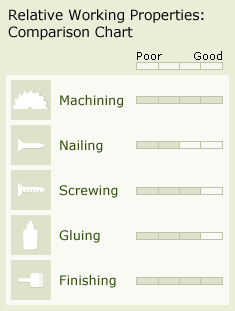
Basswood (Tilia spp.)

Basswood (Tilia spp.) is composed of 30 to 35 species, native to Eurasia and North America. All species look alike microscopically. A favorite wood for carving. The word tilia is the classical Latin name, probably from the Greek ptilon, wing, referring to the winglike bract of flower clusters.
Grades Available: Sel/Btr, #1 Common, #2 Common
Sizes Available: 4/4, 8/4
The Tree: American basswood grows to co-dominance in association with sugar maple and red oak / white ash forests, while it is a minor component in other forest types. It can grow to an elevation of 5,000’ ft in the Appalachians. The tree can reach a height of more than 120’ ft with a diameter of almost 5’ ft. Basswood may grow to be more than 140 years old. The trees have straight trunks, with most of the bole limb-free, and narrow, short crowns. The trees grow as a cluster of stems, developed from stump sprouts. The bark is initially dark green and shiny, developing to a grayish color with deep furrows.

General Wood Characteristics: The sapwood of basswood is white to cream, while the heartwood is pale to reddish brown, with darker streaks. When dry, the wood has no characteristic odor or taste. The wood is soft and light, with a fine, even texture.
Working Properties: American basswood works easily with tools, making it a premier carving wood. It is poor in holding nails and in bending, but moderate in gluing and good for holding paint or printing inks.
Durability: Rated as slightly or nonresistant to heartwood decay.
Uses: Lumber, veneer, plywood, carvings, pulp, decoys, fiber products, furniture stock, caskets, mobile homes, shade rollers, signs, toys, sporting goods, woodenware and novelties.

